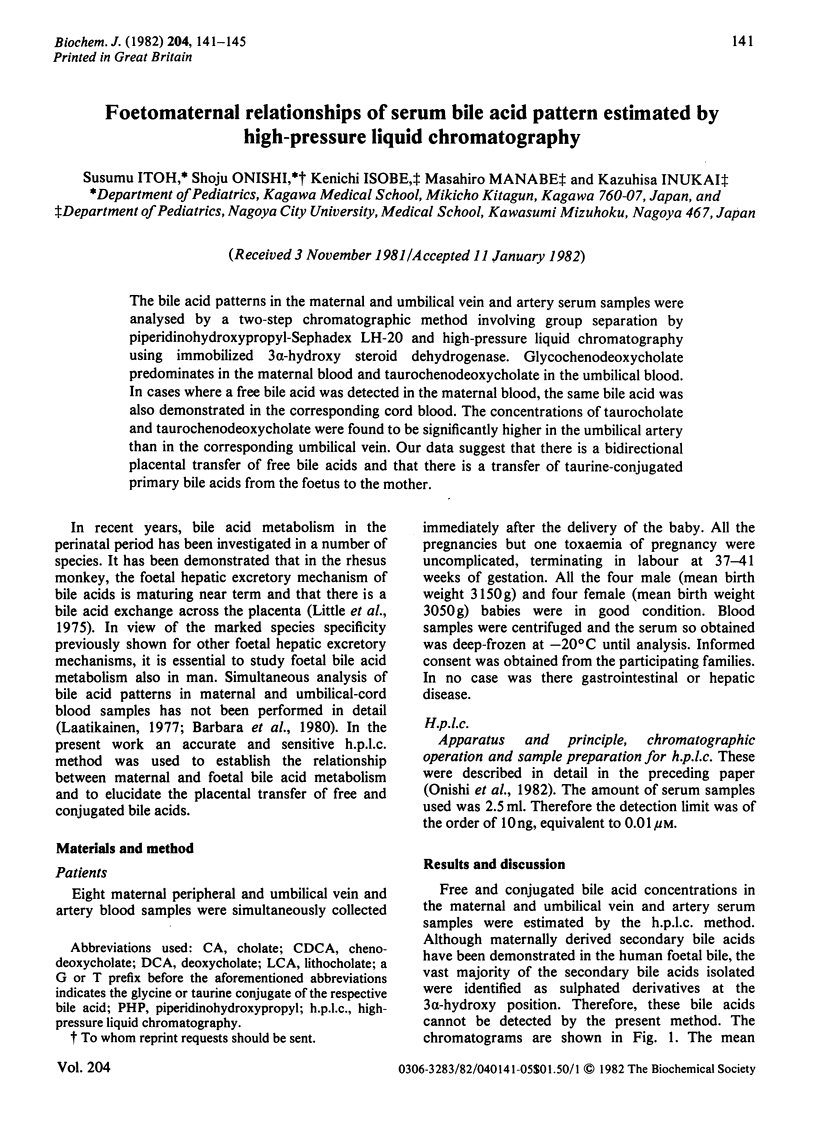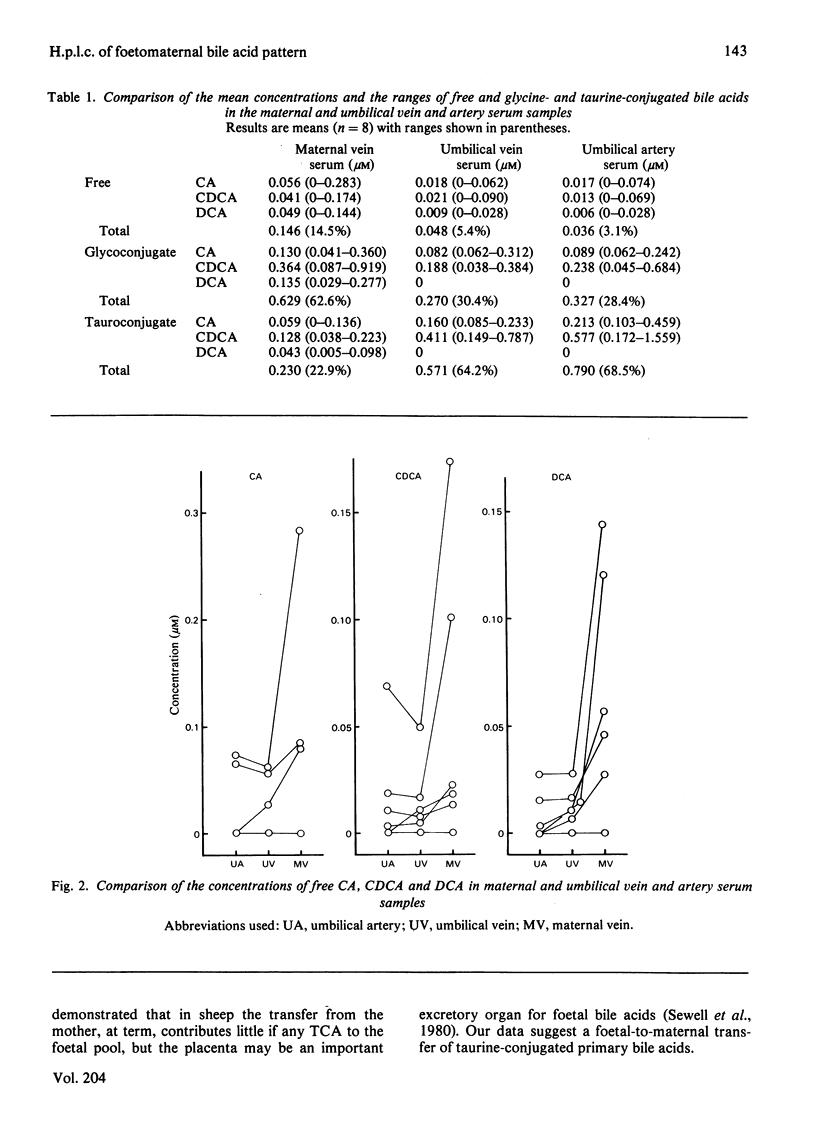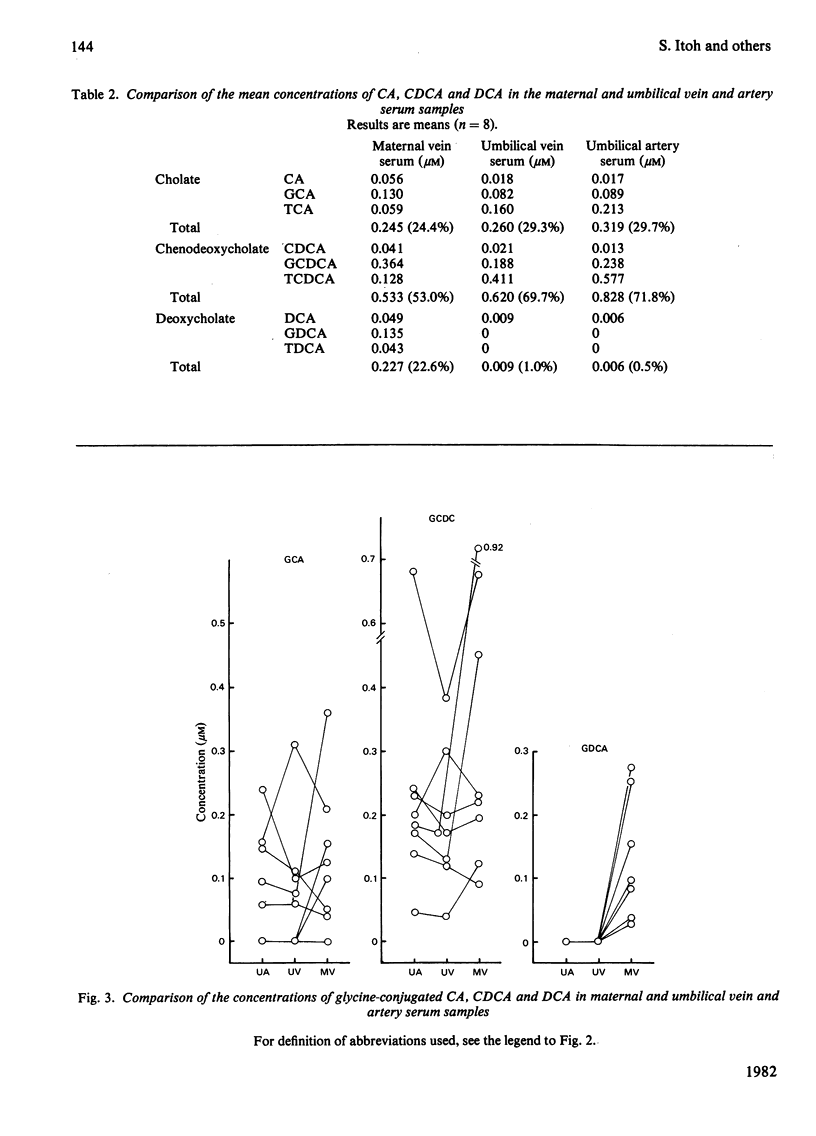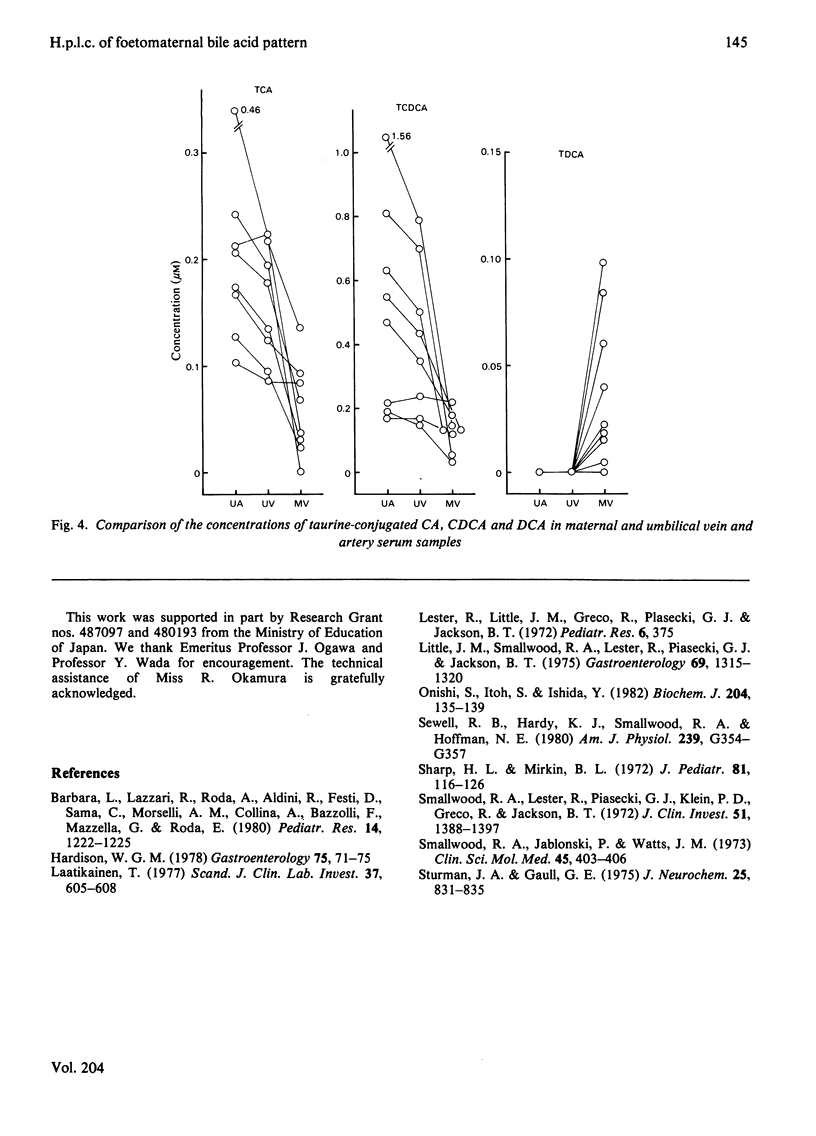Abstract
The bile acid patterns in the maternal and umbilical vein and artery serum samples were analysed by a two-step chromatographic method involving group separation by piperidinohydroxypropyl-Sephadex LH-20 and high-pressure liquid chromatography using immobilized 3 alpha-hydroxy steroid dehydrogenase. Glycochenodeoxycholate predominates in the maternal blood and taurochenodeoxycholate in the umbilical blood. In cases where a free bile acid was detected in the maternal blood, the same bile acid was also demonstrated in the corresponding cord blood. The concentrations of taurocholate and taurochenodeoxycholate were found to be significantly higher in the umbilical artery than in the corresponding umbilical vein. Our data suggest that there is a bidirectional placental transfer of free bile acids and that there is a transfer of taurine-conjugated primary bile acids from the foetus to the mother.
Full text
PDF




Selected References
These references are in PubMed. This may not be the complete list of references from this article.
- Barbara L., Lazzari R., Roda A., Aldini R., Festi D., Sama C., Morselli A. M., Collina A., Bazzoli F., Mazzella G. Serum bile acids in newborns and children. Pediatr Res. 1980 Nov;14(11):1222–1225. doi: 10.1203/00006450-198011000-00014. [DOI] [PubMed] [Google Scholar]
- Hardison W. G. Hepatic taurine concentration and dietary taurine as regulators of bile acid conjugation with taurine. Gastroenterology. 1978 Jul;75(1):71–75. [PubMed] [Google Scholar]
- Laatikainen T. Fetomaternal relationships of serum bile acids in uncomplicated pregnancy. Scand J Clin Lab Invest. 1977 Nov;37(7):605–608. doi: 10.3109/00365517709100652. [DOI] [PubMed] [Google Scholar]
- Little J. M., Smallwood R. A., Lester R., Piasecki G. J., Jackson B. T. Bile-salt metabolism in the primate fetus. Gastroenterology. 1975 Dec;69(6):1315–1320. [PubMed] [Google Scholar]
- Onishi S., Itoh S., Ishida Y. Assay of free and glycine- and taurine-conjugated bile acids in serum by high-pressure liquid chromatography by using post-column reaction after group separation. Biochem J. 1982 Apr 15;204(1):135–139. doi: 10.1042/bj2040135. [DOI] [PMC free article] [PubMed] [Google Scholar]
- Sewell R. B., Hardy K. J., Smallwood R. A., Hoffman N. E. Fetal bile salt metabolism: placental transfer of taurocholate in sheep. Am J Physiol. 1980 Nov;239(5):G354–G357. doi: 10.1152/ajpgi.1980.239.5.G354. [DOI] [PubMed] [Google Scholar]
- Sharp H. L., Mirkin B. L. Effect of phenobarbital on hyperbilirubinemia, bile acid metabolism, and microsomal enzyme activity in chronic intrahepatic cholestasis of childhood. J Pediatr. 1972 Jul;81(1):116–126. doi: 10.1016/s0022-3476(72)80390-1. [DOI] [PubMed] [Google Scholar]
- Smallwood R. A., Jablonski P., Watts J. M. Bile acid synthesis in the developing sheep liver. Clin Sci Mol Med. 1973 Sep;45(3):403–406. doi: 10.1042/cs0450403. [DOI] [PubMed] [Google Scholar]
- Smallwood R. A., Lester R., Plasecki G. J., Klein P. D., Greco R., Jackson B. T. Fetal bile salt metabolism. II. Hepatic excretion of endogenous bile salt and of a taurocholate load. J Clin Invest. 1972 Jun;51(6):1388–1397. doi: 10.1172/JCI106934. [DOI] [PMC free article] [PubMed] [Google Scholar]
- Sturman J. A., Gaull G. E. Taurine in the brain and liver of the developing human and monkey. J Neurochem. 1975 Dec;25(6):831–835. doi: 10.1111/j.1471-4159.1975.tb04414.x. [DOI] [PubMed] [Google Scholar]


